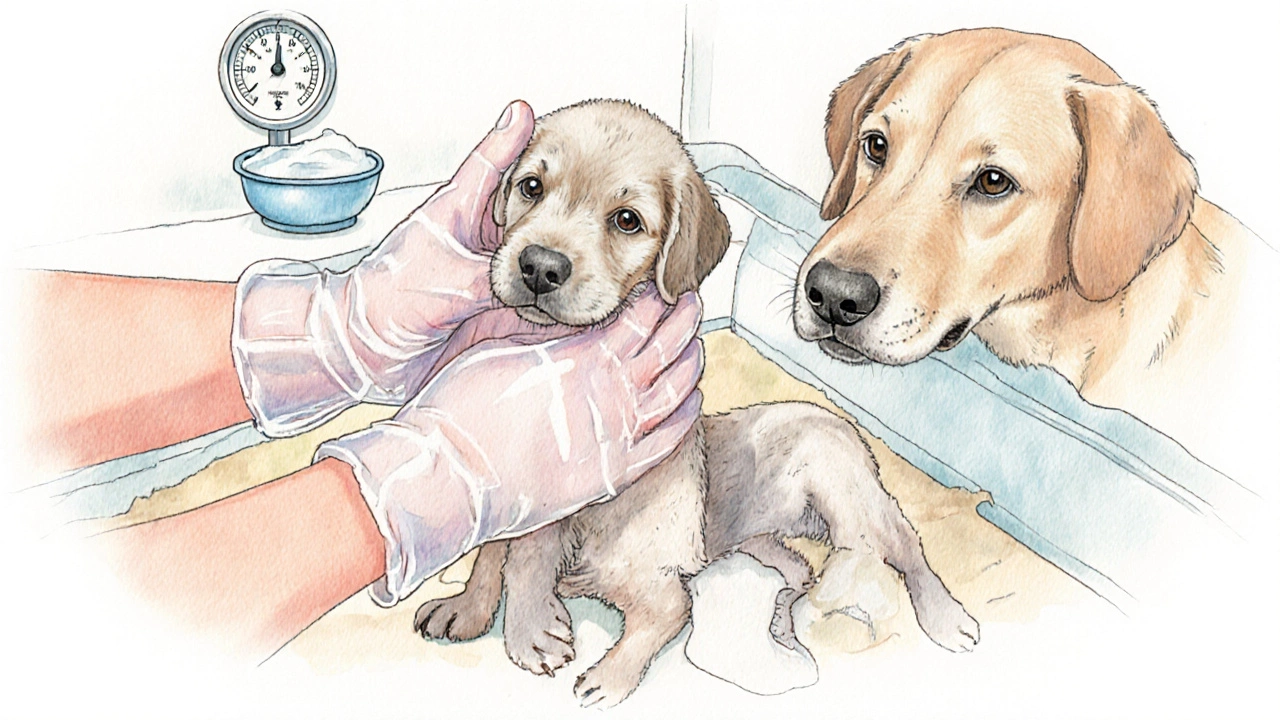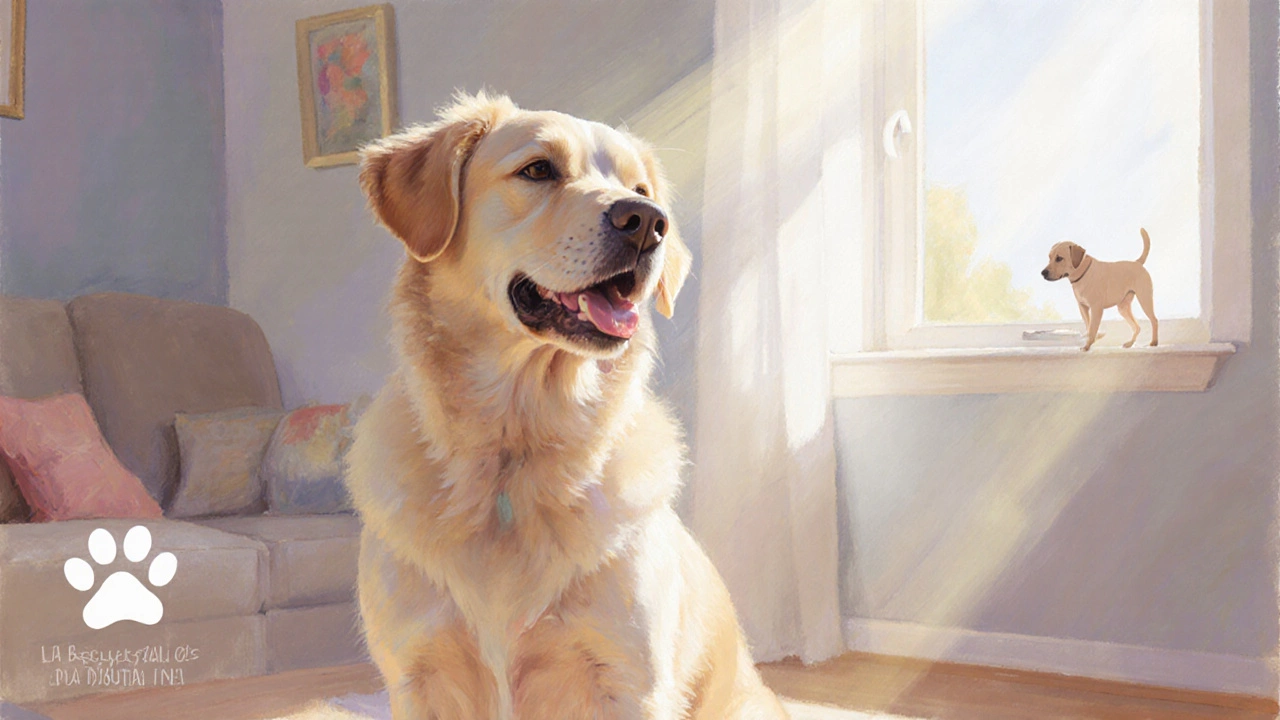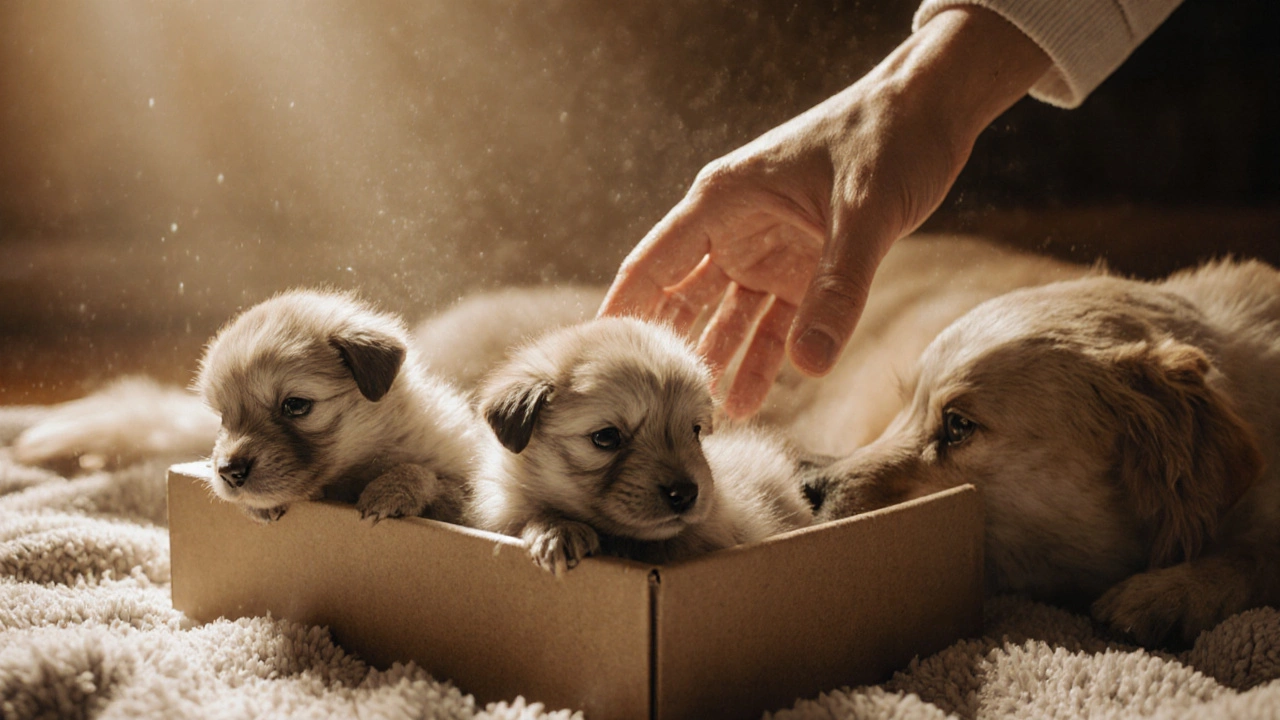Puppy Handling Time Calculator
Check If Your Handling Is Safe For 3-Day-Old Puppies
Use this tool to verify if your handling follows safe guidelines for newborn puppies
Ever wondered if it’s okay to pick up a fluffy three‑day‑old puppy? The answer isn’t as simple as a yes or no. Newborn puppies are fragile, and mishandling them can affect their health, growth, and even their future temperament. This guide walks you through why gentle handling matters, what the real risks are, and how you can safely interact with a litter without jeopardizing their wellbeing.
Quick Takeaways
- Newborn puppies’ immune systems rely on the mother’s first milk (colostrum) for protection.
- Brief, clean contact is generally safe after the first 48‑hours, but avoid prolonged handling.
- Maintain warmth, support the body, and keep your hands sanitized to prevent stress and infection.
- Touching too often can interfere with bonding and trigger stress hormones like cortisol.
- Follow a simple Do’s and Don’ts checklist to keep the litter healthy.
Understanding Neonatal Puppy Development
Newborn Puppies are tiny mammals born blind, deaf, and unable to regulate their own body temperature. Their first two weeks are a race against time to gain weight, develop sensory functions, and build immunity.
Key milestones in the first three days:
- Day 0‑1: Puppies rely entirely on the dam’s colostrum for antibodies.
- Day 2‑3: They begin to gain control over urination and defecation, though still need the mother’s help.
- Day 4‑5: Their ears start to open, and they become slightly more responsive to touch.
Because their bodies are still forming, even a gentle pinch can cause bruising or stress, which may linger as a fear of humans later on.
Why Handling Matters: The Science Behind Stress and Immunity
Studies from the University of Copenhagen (2023) showed that puppies handled for more than ten minutes per day during the first week had higher cortisol levels and slower weight gain. Cortisol, the stress hormone, can suppress the already fragile immune response, making them more susceptible to infections like canine parvovirus.
In contrast, brief, purposeful contact-such as a quick health check-did not elevate stress markers. The difference lies in Hand Hygiene keeping the handler’s hands clean and warm and the way the pup is supported during the lift.
Do’s and Don’ts of Touching a Three‑Day‑Old Puppy
| Do | Don’t |
|---|---|
| Wash hands with mild soap and warm water before the first touch. | Use alcohol‑based sanitizers that can dry out the skin. |
| Keep contact under 30 seconds unless performing a health check. | Hold the puppy for extended periods; it can overheat quickly. |
| Support the chest and hindquarters, never the neck. | Let the pup hang by its neck or swing it gently. |
| Stay calm; speak in a soft voice to avoid startling the dam. | Make sudden movements that may alarm the mother. |
| Perform brief checks for warmth, breathing, and weight gain. | Attempt to clean the pup’s ears or eyes at this stage. |
Following these guidelines balances the need for early human bonding with the critical health requirements of a newborn litter.

How to Safely Interact: Step‑by‑Step Guide
- Prepare the environment: Ensure the whelping box is warm (90‑95°F) and free of drafts.
- Clean your hands: Wash for at least 20 seconds, dry, and optionally wear disposable gloves for extra protection.
- Approach the dam quietly: Speak softly, let the mother see you, and wait for her to acknowledge your presence.
- Gently lift the pup: Slide one hand under the chest, the other under the hindquarters, and lift just enough to inspect.
- Check vital signs quickly: Look for steady breathing, a warm belly, and ensure the pup is pink, not pale.
- Return the pup: Place it back low in the nest, letting the mother nuzzle it back into place.
- Log the interaction: Note the time, duration, and any observations (weight, temperature) in a care journal.
Repeating this routine once or twice a day is enough to monitor health without causing stress.
Common Myths About Handling Newborn Puppies
Myth 1: The more you touch, the more the pups will love people.
Reality: Early excessive handling can actually create fear. Controlled, calm exposure builds trust better than constant petting.
Myth 2: You can give a newborn puppy a bath to keep it clean.
Reality: Newborns cannot regulate their temperature. A bath can cause hypothermia; keep them dry and let the mother groom them.
Myth 3: You don’t need to worry about hygiene because the mother’s milk protects the pups.
Reality: While colostrum provides antibodies, pathogens introduced via dirty hands can still cause neonatal infections.
When to Seek Professional Help
If you notice any of the following, call your vet immediately:
- Pu pup’s temperature below 95°F (35°C) or above 102°F (39°C).
- Persistent crying or inability to nurse.
- Visible scabs, pustules, or foul odour.
- Failure to gain at least 5-10% of body weight in the first week.
Early intervention can prevent serious conditions like neonatal septicemia.

Long‑Term Benefits of Proper Early Handling
When you follow the safe‑handling guidelines, you protect the litter’s health and lay the groundwork for well‑adjusted adult dogs. Puppies that experience calm, brief human contact early on tend to be:
- More confident during crate training.
- Easier to socialize with other dogs and people.
- Less prone to separation anxiety.
These traits translate into happier pets and fewer behavioral problems down the road.
Quick Reference Checklist
- Wash hands → Warm environment → Support chest & hindquarters.
- Limit contact to 30 seconds per session.
- Observe vital signs → Log observations → Return to dam.
- Watch for fever, weight loss, or infection signs.
- Contact vet if any red flags appear.
Frequently Asked Questions
Can I hold a 3‑day‑old puppy for more than a minute?
No. Newborn puppies can overheat or become stressed quickly. Keep any handling under 30 seconds and only lift them briefly for health checks.
Do I need to wash my hands before touching a newborn puppy?
Absolutely. Clean, warm hands reduce the risk of transferring bacteria that a newborn’s immune system can’t fight yet.
Will gentle handling affect the puppy’s bonding with its mother?
If you’re brief and calm, the dam usually accepts the contact. Sudden or prolonged handling can cause the mother to reject the pup, so always observe her reactions.
Is it safe to give a newborn puppy a toy?
Not at three days old. Their jaws aren’t developed, and toys can be a choking hazard. Wait until they’re at least three weeks old and can chew safely.
How often should I check the puppies in the first week?
Twice daily is enough-once in the morning and once in the evening. Record weight and temperature each time.
Can I sterilize the whelping box with chemicals before the litter arrives?
Yes, but be sure the box is fully rinsed and dried. Residual chemicals can irritate a newborn’s skin and lungs.
What temperature should the whelping area stay at?
Maintain 90‑95°F (32‑35°C) for the first week, then gradually lower to room temperature as the pups grow.
By respecting a newborn puppy’s fragility and following these proven practices, you’ll protect their health, help them thrive, and set the stage for a well‑adjusted adult dog. Remember: a few seconds of gentle, clean contact is all you need-more than that can do more harm than good.
